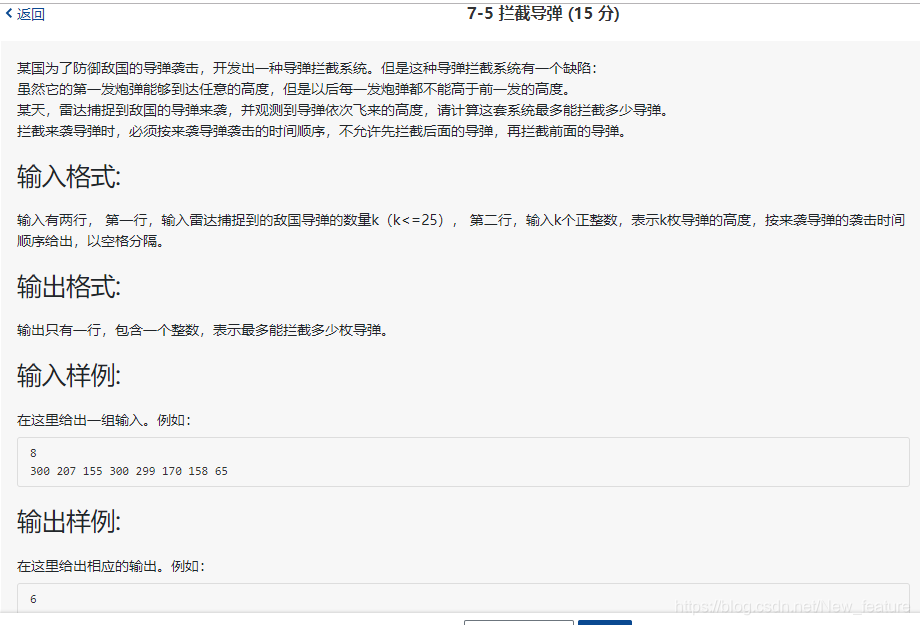
#include <iostream>
#include <cstdio>
using namespace std;
int dp[30],a[30];
int main()
{
int n;
cin>>n;
for(int i = 0; i < n;i++){
scanf("%d",&a[i]);
dp[i]=1;
}
dp[0]=1;
for(int i=1;i < n;i++){
for(int j=0; j<i;j++){
if(a[i] <= a[j] && dp[j]+1 > dp[i]){
dp[i] = dp[j]+1;df
}
}
}
int m = 0;
for(int i = 0; i < n ; i++){
if(dp[i] > m){
m = dp[i];
}
}
cout<<m ;
}





















 1144
1144

 被折叠的 条评论
为什么被折叠?
被折叠的 条评论
为什么被折叠?








